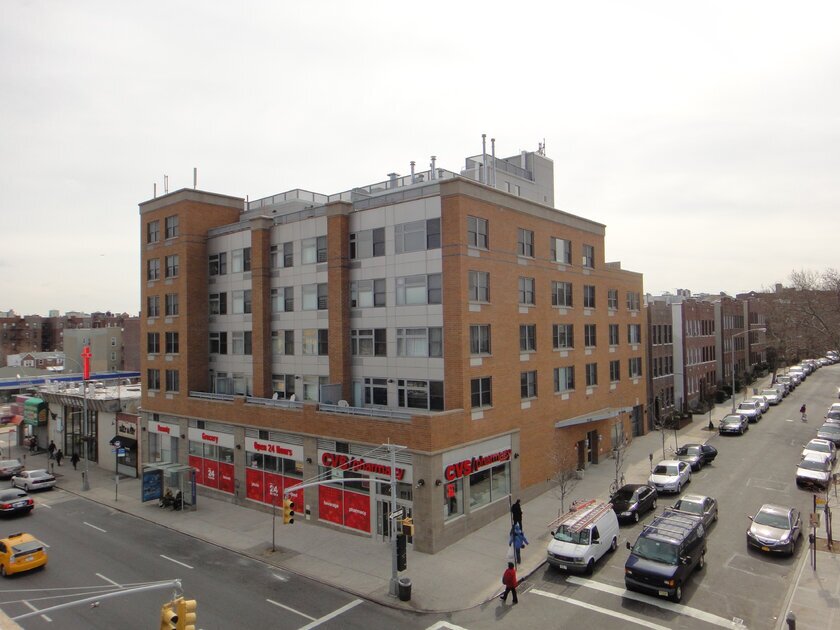That article stamped Glaeser, among progressive urbanists at least, as a rather dogmatic libertarian who didn’t care much for traditional cities in the first place.
That wasn’t quite right. Three years later, in his book Triumph of the City, Glaeser made it clear that he liked traditional urban places after all, even his native Manhattan. He professed that cities make us “richer, smarter, greener, healthier and happier.” He was merely insisting that they could do all those things better with fewer regulations, more development and less government intrusion in general.
The arguments in that book suggested either that Glaeser had evolved a bit in his thinking or that he had been misunderstood to begin with. A decade later, Glaeser’s new book, Survival of the City, demonstrates that his intellectual evolution is still taking place.
Survival of the City, co-written with Glaeser’s Harvard economics colleague David Cutler, is in many ways two separate books. Cutler is a health economist, and he takes the reader on an extended journey through all the major pandemics of history and offers his ideas about how to prevent future ones from emerging. Much of this is fascinating stuff, but most of it has only a small connection to contemporary urban policy. The hard urban analysis comes in the later chapters, which deal with Glaeser’s specialty. With due respect to Cutler’s excellent work, it is this second portion of the book that I want to focus on.
IN MUCH OF WHAT HE WRITES, Glaeser sounds as if he has evolved into some form of urban communitarian. “Humanity crafted itself an urban world because proximity is valuable,” he writes. “Face-to-face interaction enables the collaborative chain of creativity.” He asserts more than once that modern humans are not meant to live alone. That doesn’t sound like a libertarian speaking.

“There is a simple, natural fix for underbuilding,” he writes. “Allow cities to grow upward.” In other words, permit multi-story apartment buildings in the comfortable single-family neighborhoods all over America that do not want them. Once you absorb this argument, you have absorbed the set of beliefs that underlies Glaeser’s portion of the book. He goes so far as to portray NIMBYism as a curse.
But there is one important way in which Glaeser’s views suggest a fundamental evolution from the ideology that marked much of his earlier writing. That evolution has to do with the role of government. He is no longer calling for a “deregulated free-market city.” He is calling upon governments to take a distinctly proactive role in creating the vibrant and egalitarian urban life that he wants America’s cities to have. “We need more capable public sectors,” he proclaims, “if our societies are going to empower individuals to remake our world.” Commenting on the nation’s response to COVID-19, he writes (perhaps with Cutler) that “we must never again allow our public sector to be so weak or our urban world to be so unprotected.”
IN HIS PORTION OF THE BOOK, Glaeser says some things that one would never have imagined him saying in the past. He advocates, for instance, a federally based Apollo program, as bold as the moonshot initiative of the 1960s, to expand opportunity for children in poor communities. “Only the national government,” he declares, “has the ability to borrow large sums for the needed investment in America’s young.” This comes off as vague and gimmicky: Attaching a popular nickname to an intractable problem does not bring us any closer to solving it. But Glaeser means business. At one point he floats the idea of tripling the budget of the federal Department of Education. His emerging support for the public sector is in line with his (and Cutler’s) call for a NATO-like international consortium to prevent future pandemics. Here, too, the authors have indulged in sloganizing. But their arguments for multi-national cooperation on the health front are far more convincing than evocation of a space program as a way to deal with social and educational inequities at home.
Some of the analysis Glaeser uses to back up his newfound preference for governmental activism is a bit puzzling. He frames much of his analysis on a distinction between the “insiders” who have profited too handsomely at society’s expense and the “outsiders” who have borne the brunt of recent conditions — presumably including the unfettered free market. At higher levels of abstraction, this is hard to disagree with. But who exactly are the insiders and who are the outsiders?
It’s clear that the wealthy New Yorkers who buy multimillion-dollar apartments in the sprouting glass high-rises of Manhattan have earned the label of insiders. It is fair to ask them to sacrifice some of their wealth to help deal with broader inequalities. But what about the economically burdened bungalow owners on the southwest side of Chicago or the western portion of Cleveland? They want to keep what they feel they have earned and avoid changes that will push them further down the economic ladder. Does that make them insiders? I don’t think so. In his chapter on social change in Boyle Heights, a section of Los Angeles, he appears to sympathize with the Mexican-American families who have lived in the community for generations and are militant against the arrival of gentrification. Poor as many of them may be, they hardly seem to qualify as undeserving insiders. Glaeser seems to agree with that judgment. But it muddles the whole concept to a significant degree.
STIMULATING AND INTELLIGENT as Survival of the City is, it perpetuates some of the ideological blind spots that have always been a characteristic of his work. He has never thought much of historic preservation, and he does not think much of it now, although he accepts it for buildings of obvious historic significance. He believes that preservation, in many if not most cases, is an obstacle to the growth and development he sees as vitally important. He doesn’t seem to grasp the concept that preservation of even the most ordinary-seeming businesses and dwelling places gives neighborhood residents a sense of continuity and stability that is essential to their overall well-being. A homeowner who values the existing comforts of his home and neighborhood is not an obstructionist insider.
Similarly, Glaeser fails to appreciate the role that neighborhood schools, even ones that produce low test scores, play as a pillar of community self-respect. He blames the existence of troubled schools largely on poor teaching and greedy unions, rather than on culturally unprepared students. “Schools protect insiders,” he writes, “including poorly performing teachers with tenure, and fail outsiders.” He continues to believe, at least implicitly, in the power of government-mandated competition to be the centerpiece of a dramatic reform agenda. One might look to the results of the past two decades as a refutation of this ideological program.
Finally, Glaeser believes in the potential of mass mobility as at least a partial solution to the indignities and inequalities of present-day American life. “The jobless remain rooted in place partially to avoid paying the housing costs of moving to more dynamic and expensive locales. … If workers are 30 percent more productive in Silicon Valley than in Detroit, then America automatically becomes more productive when migrants go west.” Jump-start the housing supply in the job-rich locations, and they would move there and all of us would benefit. Why would anyone continue to live in Detroit, or South Bend, Ind., or Johnstown, Pa., if they could make a decent living somewhere else?
But it isn’t quite that simple. Lots of people do move out of stagnant cities, but lots of others stay. They remain in hardscrabble towns because their relatives are there, or because they are attached to the physical surroundings they were born in, or because they can do routine daily business with people they know, or because of a church or school that means something to them. A bigger paycheck in an unfamiliar place isn’t going to draw them as if it were a magnet.
Opportunity and entrepreneurship have always been vital components of the American experience, and they always will be. But so are stability and continuity, and familiar comforts. Economists, even the most brilliant ones, would be well-served by spending some time thinking about that.
Related Content














